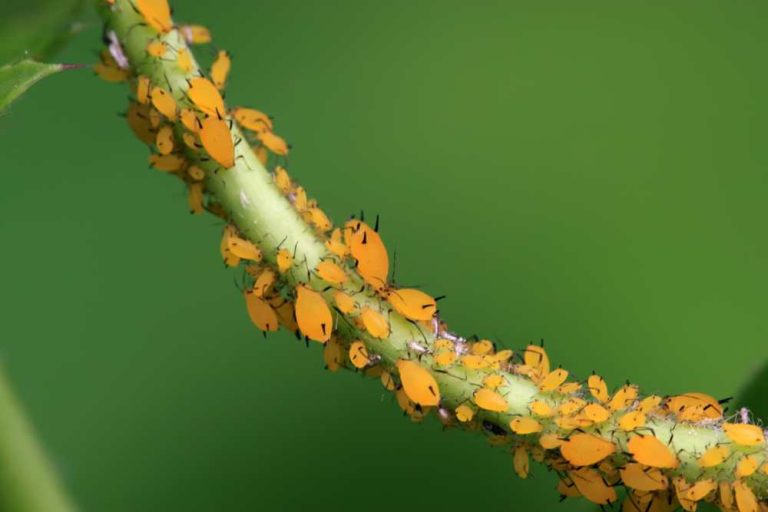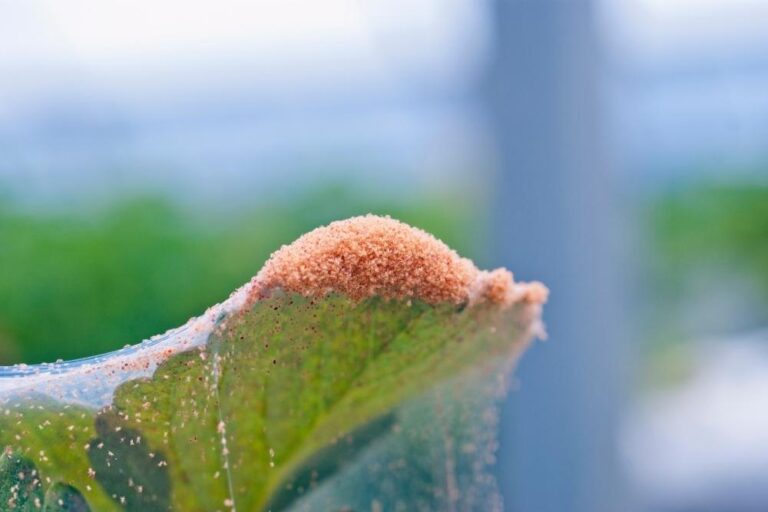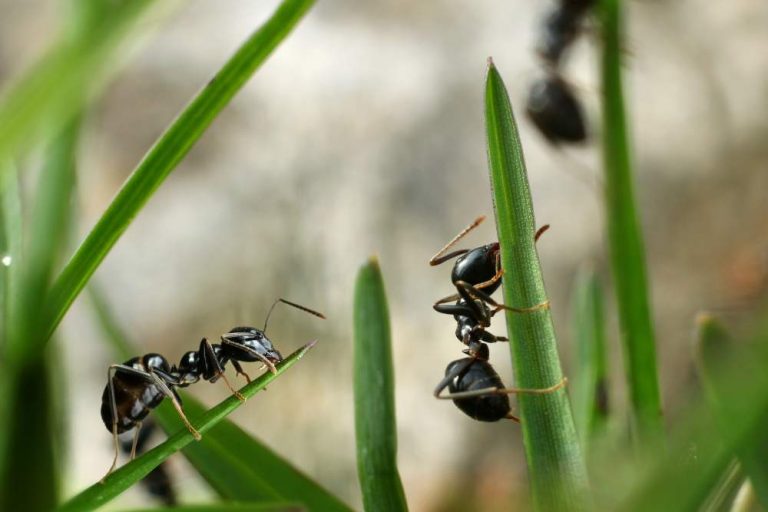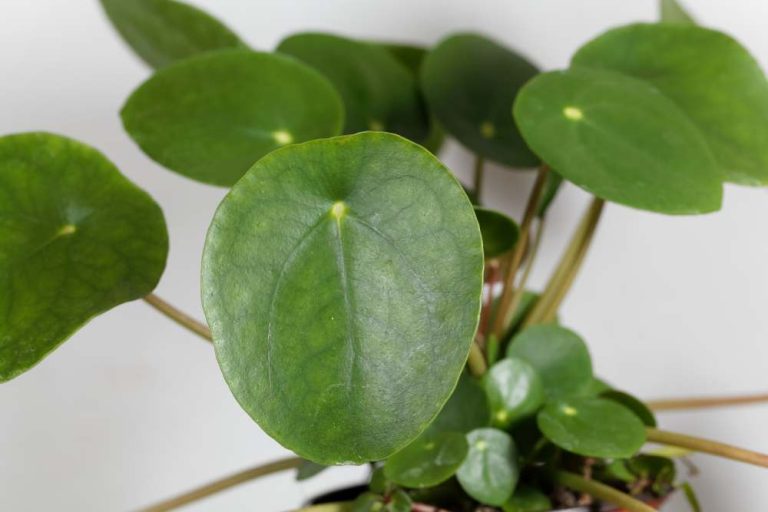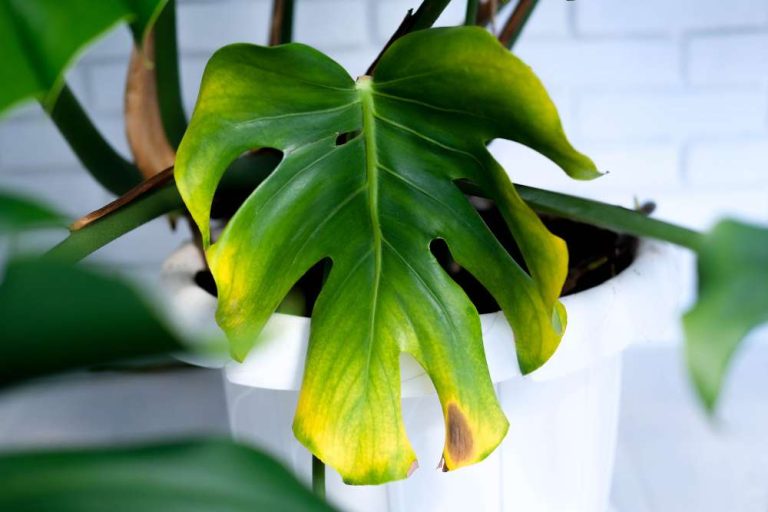20+ Common Orange and Black Bugs in Garden – A Comprehensive Guid
If you have a garden, you will undoubtedly encounter insects, vermin, flies, caterpillars, and wasps daily. Understanding which garden pests are dangerous and which are helpful is critical. We get a lot of questions about orange and black bugs in garden because they are widespread in North America.
Most orange and black-colored insects won’t eat your plants, but a few may. For instance, asparagus beetles, cucumber beetles, Mexican bean beetles, and Colorado potato beetles are unwelcome and harmful to visitors.
The beneficial properties of orange and black bugs differ depending on the species. Some of these insects are vegetarians that only consume plant debris, while others are predators that can aid in controlling pest bug populations.
Orange Bugs That Are Good For My Plants
Aphids, alfalfa weevils, colorado potato beetles, grape rootworms, chinch bugs, asparagus beetle larvae, spider mites, and whiteflies are among the pests that are eaten by ladybugs and milkweed assassin bugs. Ladybugs are helpful tiny creatures, and if you can foster an atmosphere that encourages them, they can help you maintain your garden free of dangerous pests. The orange assassin bug quickly kills aphids, ladybugs, worms, whiteflies, beetles, mosquitoes, and caterpillars.
Although the milkweed beetle looks a lot like a ladybug, it is not a helpful insect. They don’t appear hazardous either, though, and they seem attracted to milkweed plants. Although you might wish to kill the adult bugs, the young ones are good for the ecosystem and serve as food for other creatures in the food chain.
1. FireBug
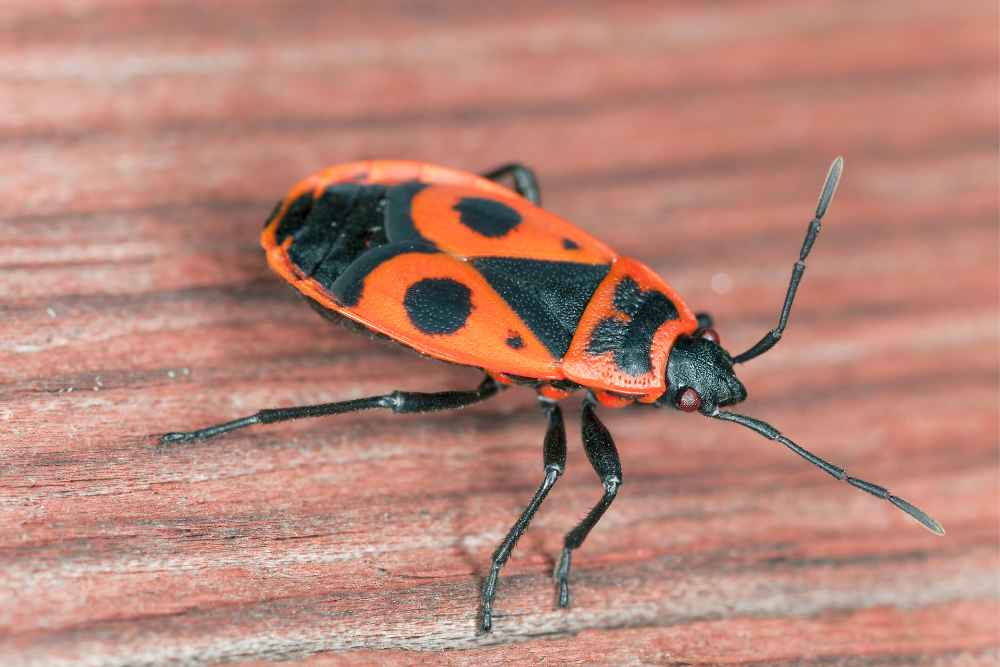
Because of its vivid orange abdomen with two black dots and recognizable black patterns, the orange firebug is an eye-catching insect. Despite not being native to the Americas, the firebug (Pyrrhocoris apterus) is occasionally seen there, and a population of them has even established itself in Utah. The firebug has an oval, flattened body that is bright reddish-orange in color.
Its abdomen is covered with triangular and rounded black markings. You will be drawn to it by its vibrant colors and distinctive features. They are frequently observed in groups during their mating season, making identifying them simpler. The firebug, which grows to a length of around 10 mm as an adult, is one of the smaller red and black bugs. It typically feeds on lime and mallow trees.
Its distinguishing features are two prominent black specks and a black triangle on a red background. In the areas of the United States where it lives, the firebug is generally found near lindens and mallows. Because of their bright reddish-orange color and black markings, firebugs are simple to identify in the yard. The harmless little orange cockroaches might enter homes in the fall, even though they are little and harmless. Because they have an unpleasant smell and can leave a dark crimson stain on clothes, it is better not to squash them.
2. Eastern Boxelder Bug
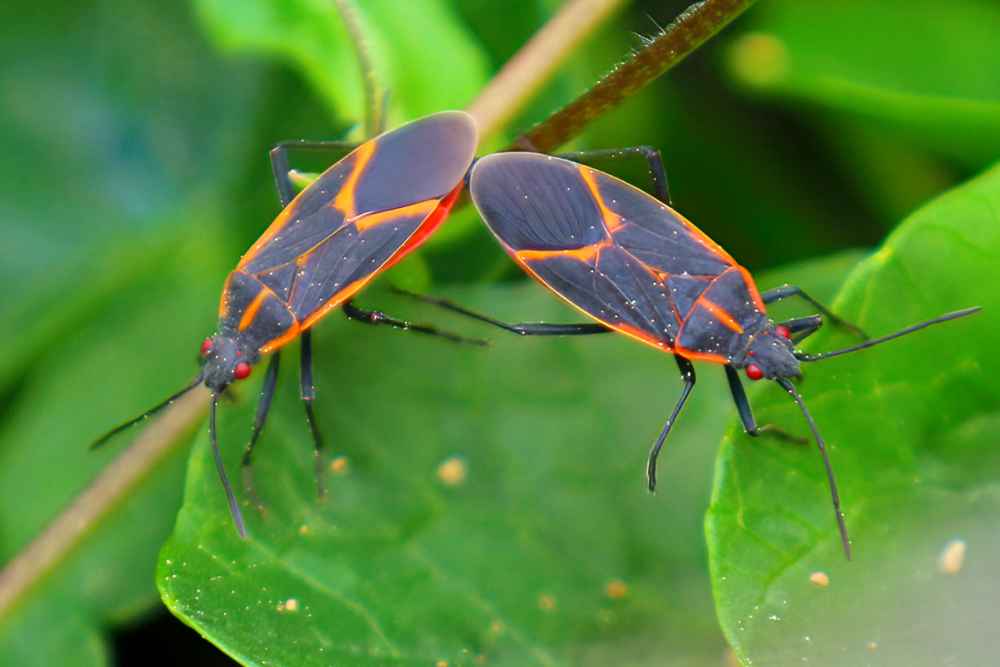
The Eastern Boxelder Bug (Boisea trivittata) is indigenous to the United States. Eastern boxelder bugs may be found if you live east of the Rocky Mountains, and they congregate in huge numbers on the sunny side of your house.
Boisea trivittatus, often known as boxelder bugs, have the unlucky habit of invading homes in the fall, so people frequently view them as pests. The black color with a colorful stripe distinguishes this genus of bugs. The body of the species is an almost-black shade of dark brown. It expands to a maximum size of 12.5mm.
The sap from their host plants’ flowers, seeds, and leaves is what boxelder bugs, both adult and larval, eat. They mostly eat maples, particularly boxelder maples, from which they receive their name.
The oaks and ailanthus are also likely to draw by them; thus, their diet is not limited to Acer species. With a maximum length of half an inch, the eastern boxelder beetle has a distinct red accent around its edges. The pronotum has a red stripe running down the middle, a crucial distinguishing feature.
3. Small Milkweed Bug
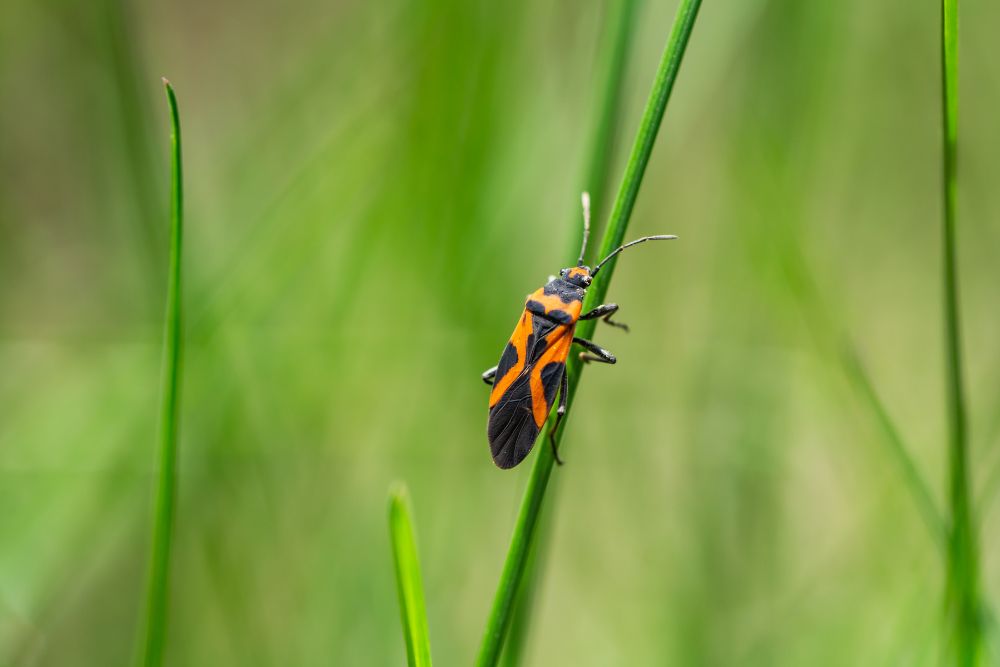
The United States is home to these bugs, but they can also be found anywhere in the world. Along with hanging around in the milkweed patch, the little milkweed bug (Lygaeus kalmii) also eats the seeds when they become ready. However, it’s unclear exactly what it eats. Some observers have noted that tiny milkweed bugs eat flower nectar, scavenge dead insects, or even hunt other arthropods.
The smallest milkweed bugs are about 12 mm long at their longest and have an oval-shaped, primarily black body. The presence of a reddish-orange “X” on the back immediately distinguishes them, even though the lines creating the “X” do not completely meet in the center.
The term “small milkweed bugs” comes from their fondness for milkweed. Eggs from this bug species are laid on milkweed. Larvae and adults of the species both eat milkweed as food. Tiny milkweed bugs eat milkweed nectar. Little milkweed bugs, which resemble miniature cockroaches, may also consume flies and other insects in the absence of milkweed.
4. California Bordered Plant Bug
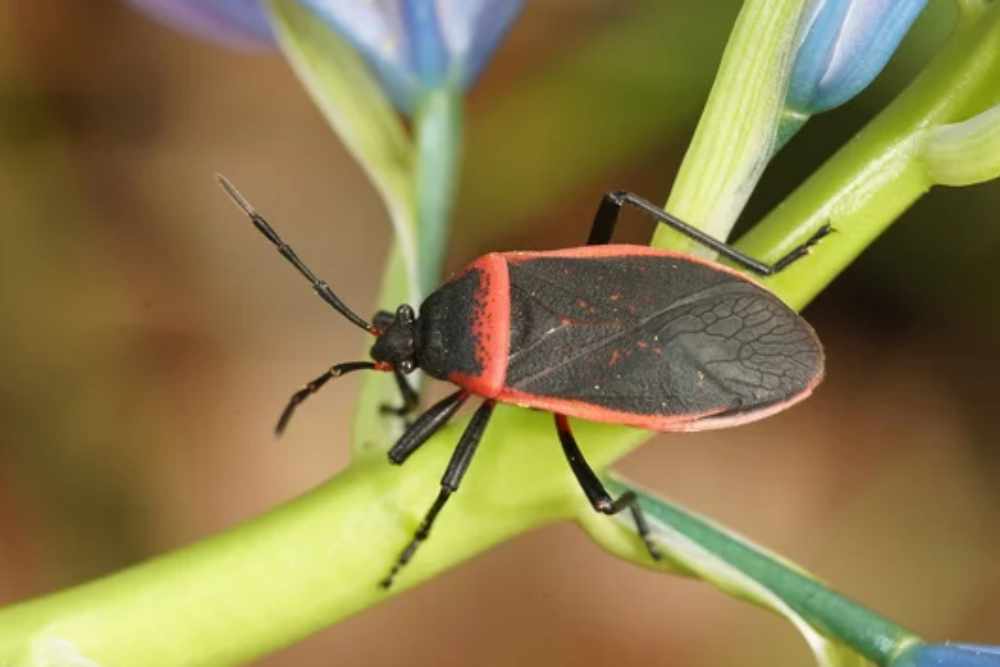
The orange stripes surrounding the body of California Bordered Plant Bugs (Largus californicus) give them their name. These black bugs are widespread in California and other Western US states. Sharp mouthparts of the species are employed to extract fluids from plants and flowers.
Strawberries are among the most popular fruits these insects can puncture and consume. Almost any soft fruit that they can puncture can be consumed. These insects, which reach a size of slightly more than 1 inch, are simple to spot since they retain their appearance as they become older.
5. Large Milkweed Bug
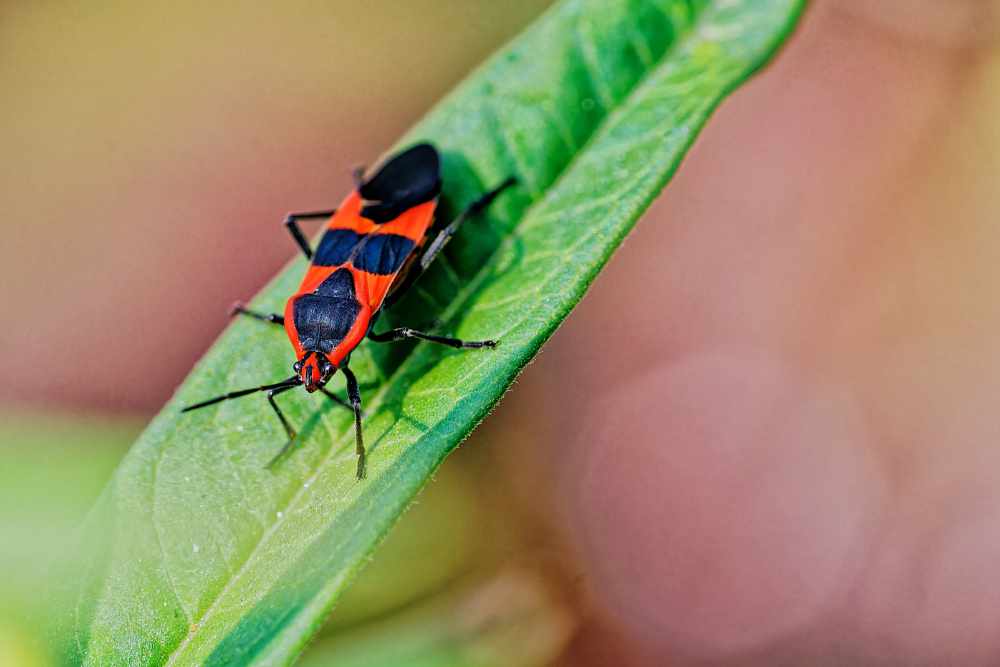
Widely seen in the Caribbean, South, and North America. The large milkweed bug (Oncopeltus fasciatus), a common red and black bug, is well-known to anybody who raises milkweed for monarch butterflies. They may be mistaken for boxelder bugs by those who are not familiar with them. Large milkweed bugs eat milkweed seeds and nectar on occasion.
As they mature, several huge milkweed bugs, both nymphs, and adults, will frequently congregate around the milkweed seed pods. The huge milkweed bugs move south for the winter, where they overwinter as adults. The average length of large milkweed bugs is only 10 to 18 mm.
Their markings can be recognized, including a solid black band running through the center and black diamonds on a reddish-orange background at the front and back. It is dark in the lower abdomen. The only black and orange species having a broad black band across the X-shaped orange markings on the dorsum is the Large Milkweed Bug.
6. Bee Assassin Bug
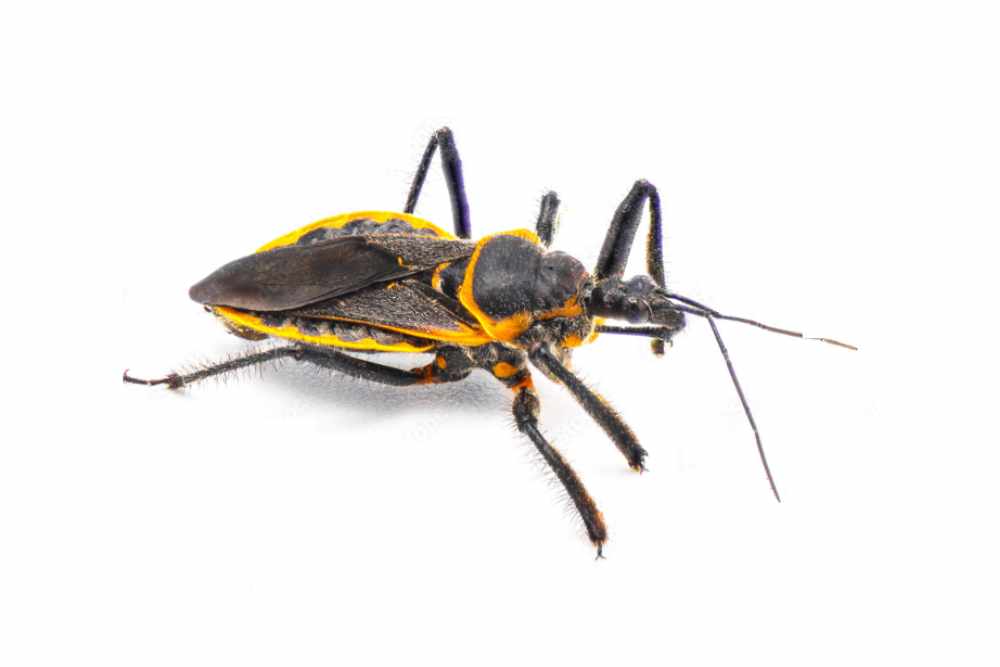
Apiomerus crassipes, the bee assassin beetle, is more than just a threat to bees. All arthropods, including honey bees and other pollinators, will be readily consumed by this generalist predator. The bee assassin rests on flowering plants while waiting for a suitable meal, just like other cunning assassin bugs.
The first set of legs of bee assassins have hairs that stay together, allowing them to grasp their target. The bee assassin is a striking exception to the rule that most assassin bugs have weak flight abilities. Bee assassin bugs have red (or occasionally yellow) patterns down the sides of the abdomen and are generally all black in color.
Individual bee assassins within the species can range in size quite a bit, with some being as little as 12 mm and others being as long as 20 mm. Bee assassin bugs are usually calm, but if they are handled carelessly, they may bite in self-defense.
7. Asian Lady Beetle
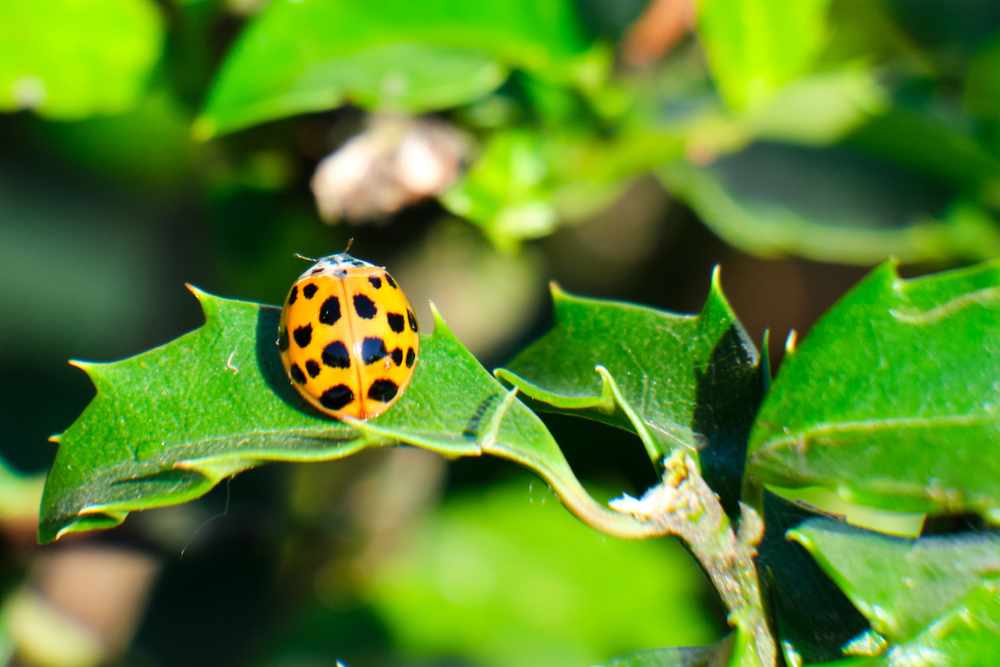
Asian ladybugs (Harmonia Axyridis) have rounded wing covers and an orange body with black dots. In comparison to local ladybugs, these ladybeetles are huge. They have a recognizable white spot right behind their heads, so you can tell them apart from the native species.
The orange insects have a length of 0.21″ to 0.33″ (5.5 – 8.5 mm). Additionally, they can be recognized by the white “W” or “M” marking on their thorax. These orange insects, termed “bugs,” do not belong to the Hemiptera order of insects.
They are a type of invading flying insect with wings. Aphid populations can be managed with the use of Asian lady beetles. When they invade homes in the fall, orange beetles can become pests. They move throughout a room flying or crawling, and land on objects like furniture, walls, and windows.
The best technique to remove Asian ladybugs from your home is to use insect light traps or a vacuum. However, because they release a foul smell and leave behind a yellow stain, it’s better not to crush them when getting rid of other orange-colored insects.
8. Milkweed Assassin Bug
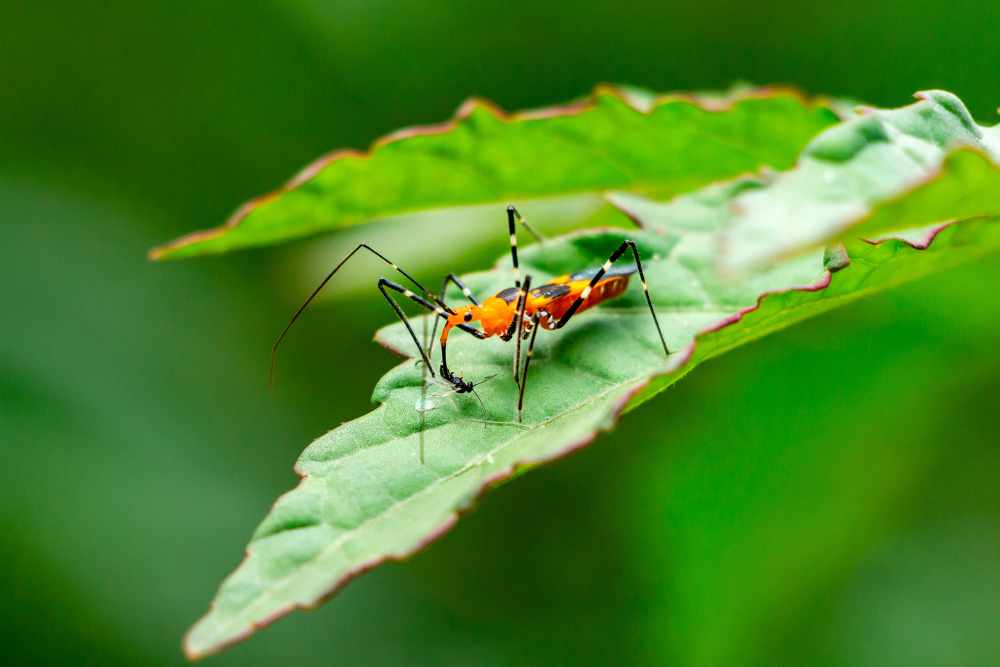
Milkweed Assassin bugs (Zelus longipes), which are native to North America, have an elongated oval, flattened body that reaches a maximum size of 18.5mm. Of course, milkweed plants are not the primary food source for Zelus longipes, the milkweed assassin bug. Including caterpillars and beetles, it is a real assassin bug that pursues all types of soft-bodied insects.
Because of their similar markings, an inexperienced viewer easily confuses these quite different real bugs. These insects have a wide range of food preferences and are known predators, which may make them useful in gardening. This useful predator is also referred to as a long-legged assassin insect. Longipes is Latin for long-legged. Its body is primarily red or orange from head to belly, with striking black markings on the thorax and wings. Usually, they spend the winter as adults.
You must know that Milkweed Assassin bugs can bite before luring them into your garden. This causes a burning sensation to last for a while. This bug species consumes various insects, including armyworms, flies, mosquitoes, and beetles. Milkweed Assassin bugs attack soft-bodied insects and bugs, capturing them in the ambush and eating them.
9. Scarlet Plant Bug
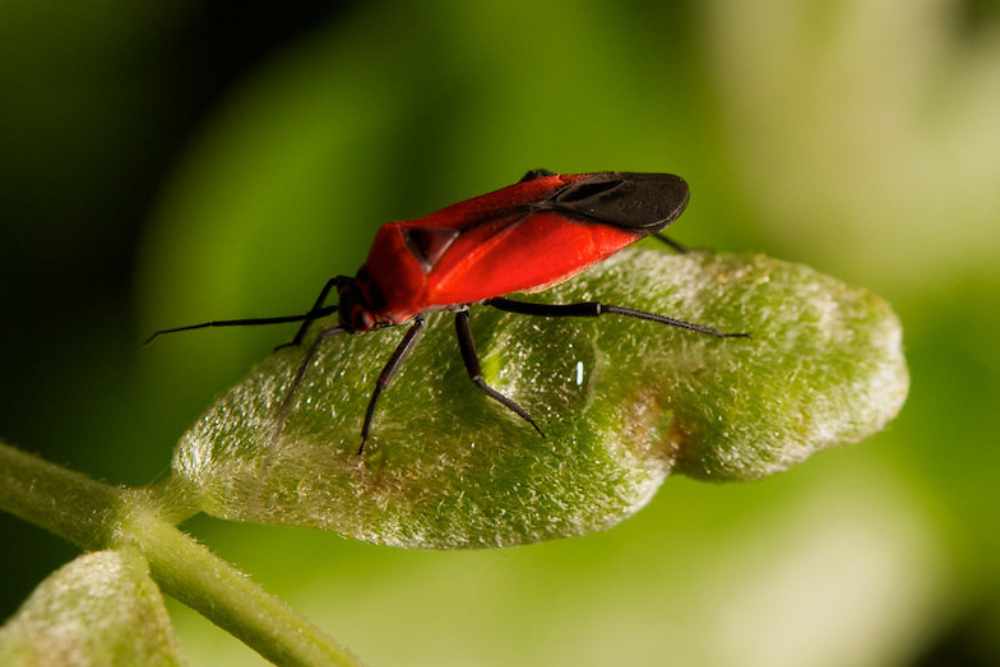
The plant bug family includes insects like scarlet plant bugs (genus Lopidea), which feed on and harm their host plants. For example, the red laurel insect, which feeds on mountain laurels, is one of several species whose names are taken from the hosts of those plants.
Many Lopidea are red and black, though not all of them. They are normally black in the center with bright scarlet around the outside margins. At 5 to 7 mm long, scarlet plant bugs are fairly small, yet their bright hues make them stand out. This group has around 90 species, roughly 47 scarlet plant bugs, in North America.
10. Western Corsair Bug
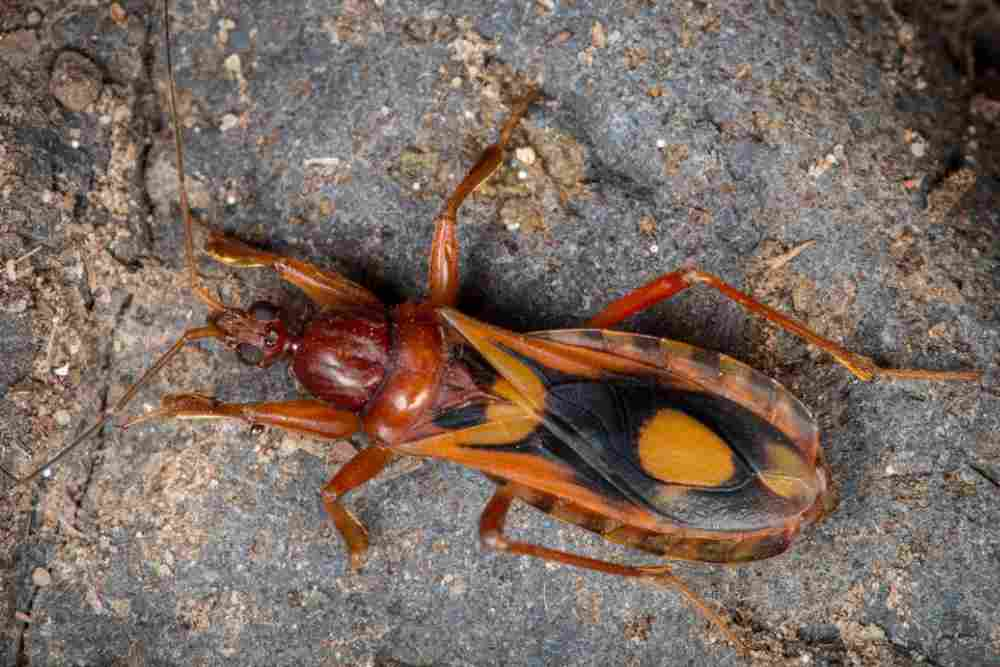
One of the frequent black and orange species seen in the Pacific Northwest is the Western Corsair Bug (Rasahus thoracicus). With an attractive black and orange color, this beetle may reach a maximum size of 23mm. It has a chevron-shaped patch behind the head and a large round orange spot on its black dorsum.
This bug also has slightly orange margins. It also has orange legs and a head. Western Corsair bugs are carnivorous. They consume a wide variety of small bugs, their larvae, and the eggs of numerous other insects. One of the important traits of this species is its aggressiveness. A painful reaction results from the bite of Western Corsair bugs. The bug, however, does not spread viruses or bacteria that cause disease.
11. Two-Spotted Stink Bug
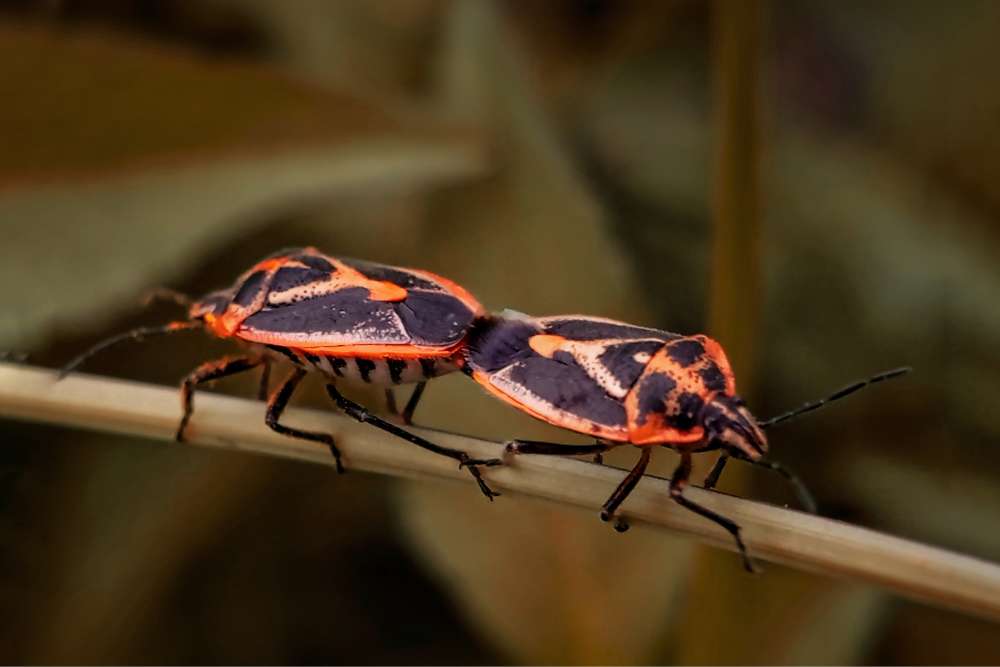
Stink bugs are actual bugs; you can typically tell them apart by their distinctive shape. Stink bugs, like all true bugs, have mouthpieces made for piercing and swallowing their meal. However, they eat a broad variety of foods. While some stink bugs are considered pests of plants, others are useful insect predators.
The two-spotted stink bug (Perillus bioculatus), one of the more prominent species of stink bugs, may be recognized by its stunning and unusual markings. Although the two-spotted stink bug doesn’t always have red and black coloring, it can still be recognized by the presence of two spots directly below the head.
The scientific term bioculatus, which literally translates to “two eyes,” is also used for this species, It also goes by its usual name, “double-eyed soldier bug.” One of the helpful predators in the Pentatomidae family is the two-spotted stink bug. Despite being a generalist feeder, the Colorado potato beetle is a known favorite food of the two-spotted stink bug.
12. Two-Lined Spittlebug

Two-lined spittlebugs (Prosapia bicincta), considered a minor pest, have a dark, nearly black body. This species is up to an inch long and has two yellow horizontal stripes across the elytra. Although two-lined spittlebugs are not a significant nuisance in gardens, they can harm plants, flowers, and grass.
The most harmful Two-lined Spittlebugs are the young ones because they adhere to specific plants and consume them until they become adults. Two-lined Spittlebugs are most frequently observed on ornamental plants. The species may also be spotted eating weeds on occasion.
13. Cotton Stainer Bug
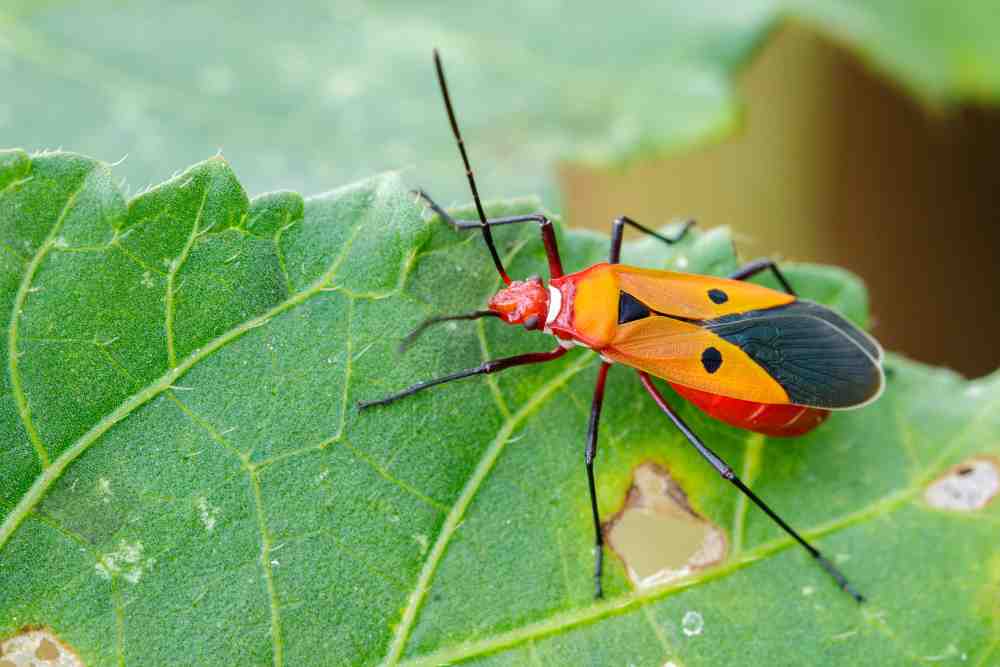
Dysdercus suturellus, the cotton stainer, is a lovely bug that causes unsightly damage to certain plants, notably cotton. Cotton is stained an unfavorable brownish-yellow due to adults and nymphs feeding on cotton boll seeds, which causes the cotton to lose its whiteness.
The cotton stainer caused severe economic harm to the business until chemical controls for this crop pest were developed. Unfortunately, the cotton stainer is not limited to cotton plants. Everything from oranges to hibiscus is harmed by this red beetle, which is actually referred to as a member of the Pyrrhocoridae family. Its range in the United States is mostly limited to southern Florida.
14. Six-Spotted Milkweed Bug
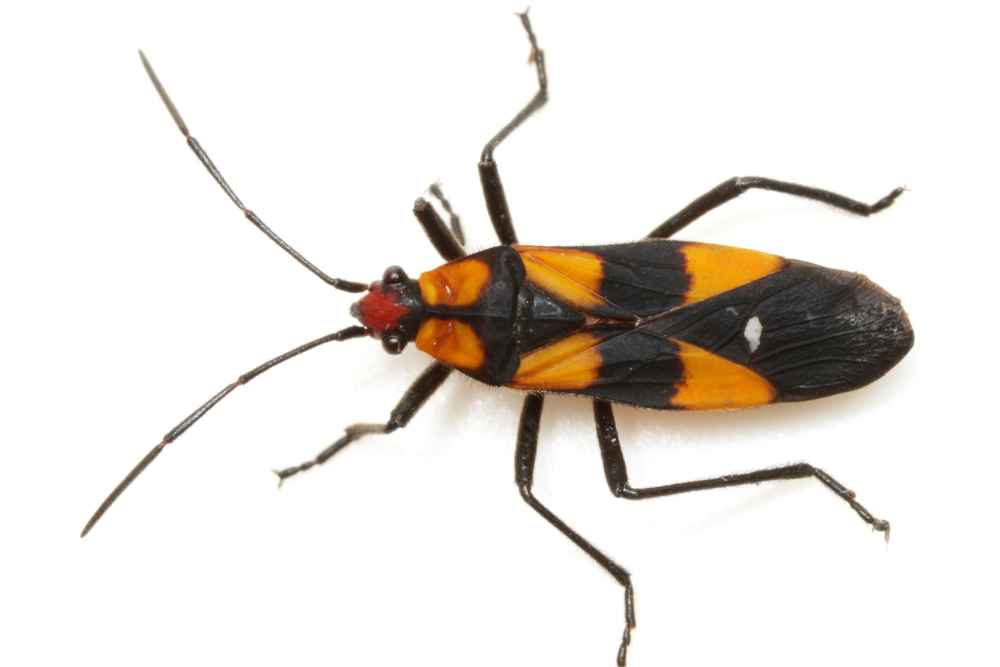
Oncopeltus sexmaculatus is the name of the bug, with six orange spots on its dorsum. The six-spotted milkweed insect is one of North America’s longest black and orange bugs. This genus’ of insects has bodies that contrast with one another. They are among the species that can be most frequently found on various flowers that have vibrant adaptations to the flowers they visit.
Why do orange spots exist? Six-spotted Milkweed bugs can be found on Butterfly weed and other orange flowers. A yellow and a red morph are among the numerous additional color variations of this species. These morphs are all black with six different colored patches on them. The bug has all-black legs and antennae, except for its brilliant red mark on the head.
15. Mediterranean Red Bug

The Mediterranean Red bug (Scantius aegyptius), which shares a color pattern with white-crossed Seed bugs, has a similar color pattern. The dorsal and ventral colors of this species are both black, with sections of red or orange on them. Its antennae, legs, and skull are all black. This species, which has a maximum growth size of 10 to 12 mm, is widespread in North America.
16. Rhynocoris Ventralis
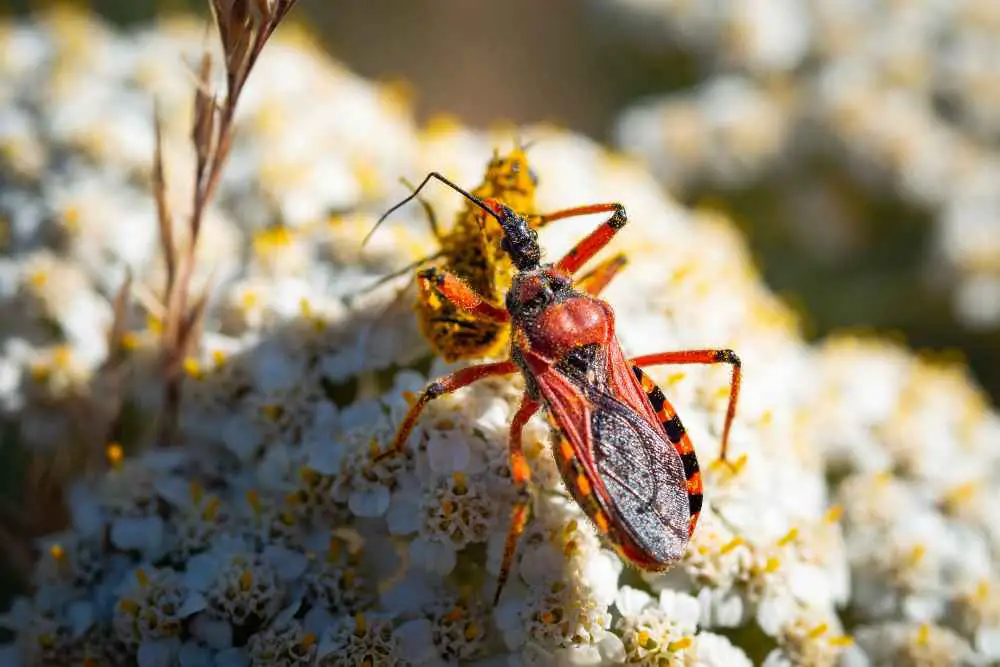
An assassin bug is this orange and black terrestrial insect. It can bite and use ambush tactics to catch small insects and larvae. Because their legs and the bottom half of their bodies are orange, buts in this genus are mostly that color. The head and the center of the dorsal are both black. The lower abdomen and borders are orange or orange-brown.
Only two black bands are visible on the orange-colored legs. Its bright orange color is contrasted by tiny black specks that can be seen on the bug’s margins. The species is terrestrial, frequently hidden behind fallen leaves or plants, and is difficult to notice by prey.
17. Eastern Bordered Plant Bug
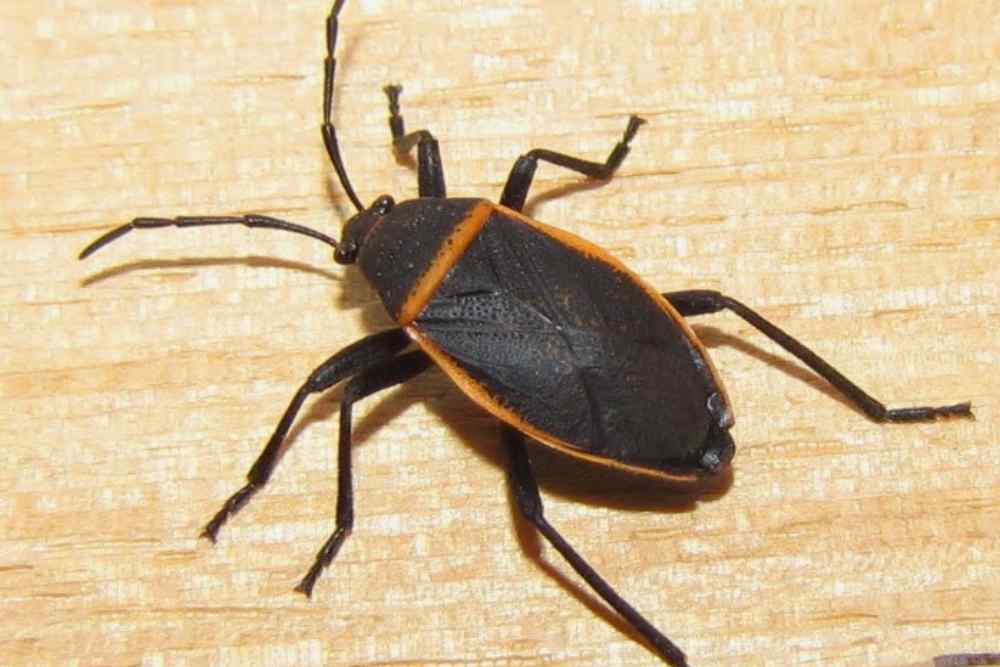
A dark brown to black body with orange edges are characteristic of Eastern Bordered Plant Bugs (Largus succinctus). The species’ brown color is accented by little black dots all over the body. This brown-black mix can be visible on both the species’ dorsal and ventral sides.
Unlike other Bordered plant bugs, this bug’s orange bands are a solid shade of orange without any yellow or red undertones. The extended mouthparts of eastern-bordered plant bugs suck plant sap in. Eggs are laid on plant leaves after they mate. These insects may spend the nighttime hiding under tree bark, in cracks in the ground, or in natural crevices.
18. Florida Predatory Stink Bug
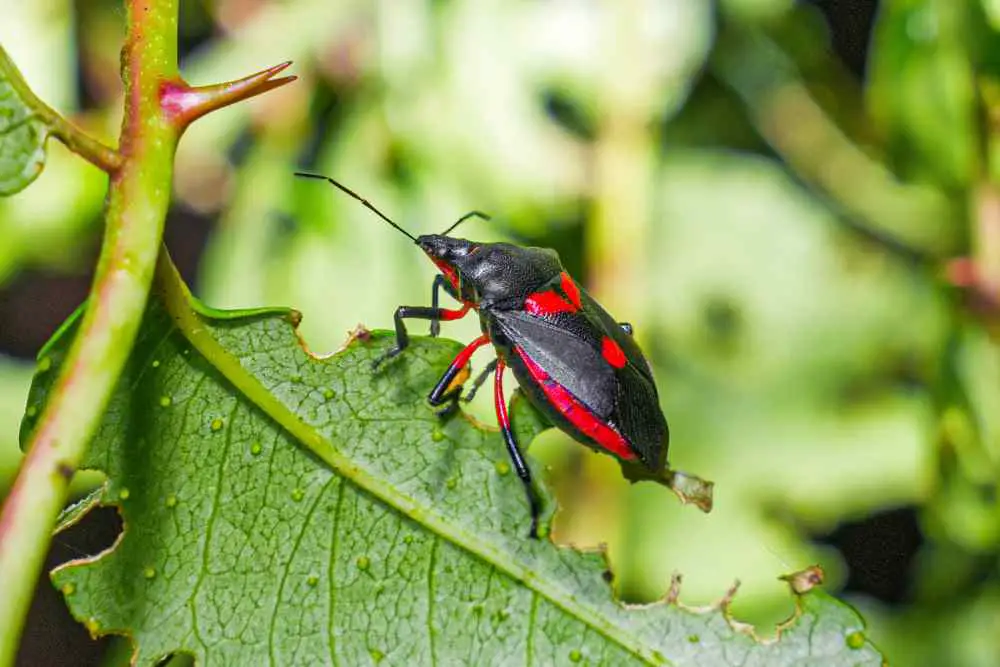
The black Florida Predatory Stink Bug (Euthyrhynchus floridanus) has orange or red markings and stripes. This kind of bug has a body form like a shield that narrows toward the back abdomen. This Florida beetle is frequently spotted on attractive plants, especially those with flowers and citrus.
Depending on its stage of development, it searches for different prey. Florida predatory stink bug larvae consume moths. Adults have a diverse diet that includes several smaller species of stink bugs. Florida predatory stink bugs feed on weevils, beetles, and the larvae of other bugs like cutworms. The female Florida Predatory Stink bug can produce up to 140 eggs when fully grown.
19. Conchuela Bug
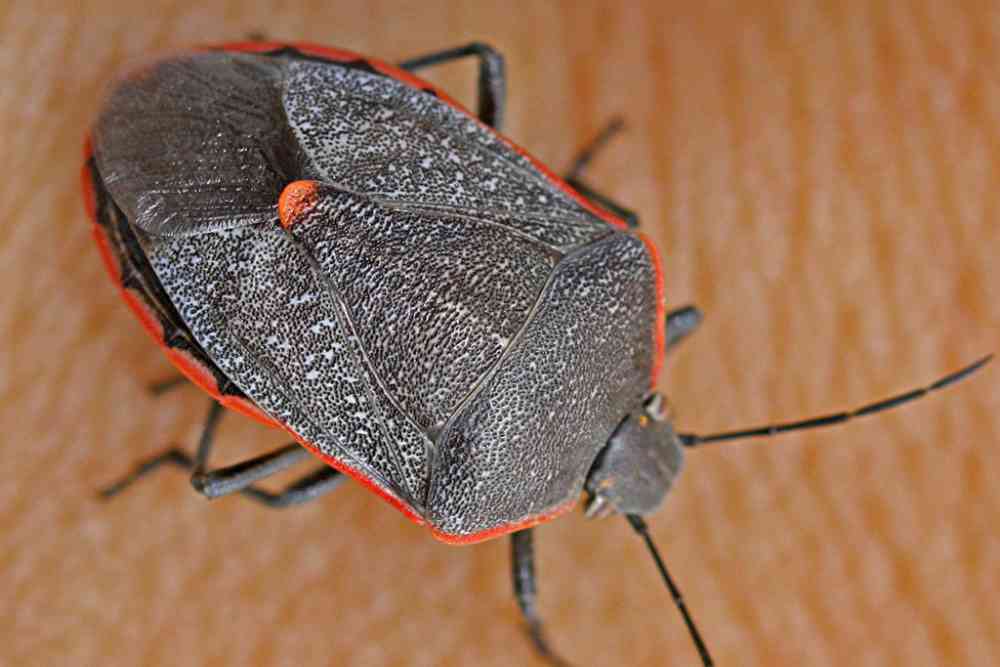
Conchuela bugs (Chlorochroa ligata) overwinter as adults and come out in the spring. When they are not active in the winter, these bugs are typically discovered hidden in cracks, under leaf litter, rocks, or logs. They are prepared to migrate outside and seek food as soon as spring arrives. The brown bodies of the insects in this genus have black dots and orange striping around their edges.
Rather than being boring orange, the orange band on it is brilliant orange. This indicates that the orange band is closer to red than to yellow. These insects can also be black or even green. After mating, female Conchuela bugs are prepared to deposit up to 30 eggs, which might hatch in as little as 30 days.
20. Bagrada Bug
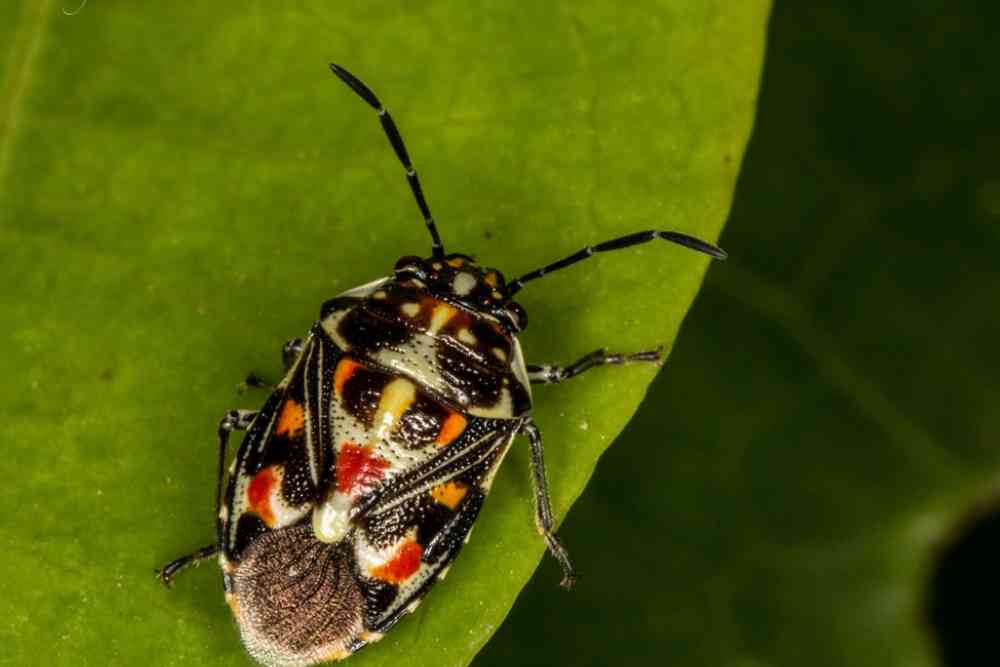
At first glance, bagrada bugs (Bagrada hilaris) resemble stink bugs. They are the same size and shape. However, Bagrada bugs have an extended body that is longer at the head than toward the abdomen. In California, these black and orange beetles are widespread and a pest that bothers both farmers and gardeners. The bodies of bagrada bugs are black, with white margins around the orange dots and an orange line running through the center.
The species has been detected in cruciferous vegetable crops. This includes the crops they enjoy eating, such as kale, cabbage, and cauliflower. When there are no more veggies to eat, the bugs consume these vegetables, which then become weeds. In addition, bagrada bugs are regarded as a significant pest not just in California but throughout the Southwestern United States.
21. Mountain Laurel Scarlet Mirid
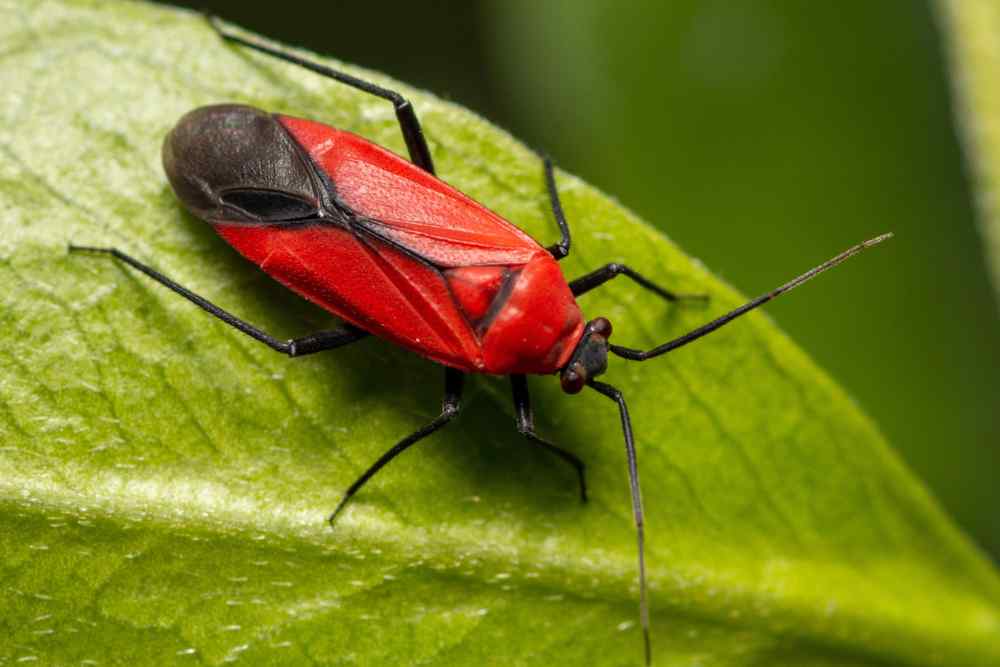
A typical plant-eating beetle in Texas is the Mountain Laurel Scarlet Mirid (Lopidea major), which is black and orange. These long, elongated bugs can grow 9mm long and are known to eat different kinds of green plants. However, because this species does not reproduce in large numbers, it does not inflict significant damage. All kinds of warm environments are home to mountain laurel scarlet mirid bugs. It’s one of the most frequent bugs in Texas parks.
Best Ways To Prevent Orange And Black Bugs In Your Garden
Bugs can be trouble, especially during winter when they seek sanctuary in your house. And This is typical since many other animals use similar strategies to live in severely cold climates. This section will review several efficient natural and synthetic methods for preventing orange and black pests from infesting your property so that your home and yard are free of pests.
Seal Any Crevices And Cracks
Start by giving your house a thorough exterior check, paying close attention to the windows, foundation, and door frames. Use foam sealant, weatherstripping, or caulk to fill in any gaps, cracks, or fractures you find. This will stop the bugs from ever getting inside your house.
Take Food Sources Away
To effectively control bugs, potential sources should be eliminated. Additionally, you should get rid of any other plants that the bugs might eat, like weeds or overgrown shrubs.
Use Neem Oil And Diatomaceous Earth
Diatoms, an aquatic organism that has been fossilized, is the source of the natural powder known as diatomaceous earth. It functions as a natural insecticide by destroying the exoskeleton of insects and dehydrating them. Diatomaceous earth can efficiently manage the bug population in locations where it is found. It serves as an eco-friendly and non-toxic substitute for chemical insecticides.
It’s important to remember that diatomaceous earth must be reapplied after heavy rain or other moisture because it loses efficiency when wet. Diatomaceous earth should also be applied carefully because it might be dangerous if inhaled.
The application of neem oil is another organic technique. This organic pesticide can be used on trees, plants, and the external walls of homes. It is derived from neem tree seeds. Both humans and pets are unaffected by neem oil, which is harmless for helpful insects.
Apply Insecticide
You can use Insecticide to keep the bugs away if caulking cracks and eliminating food sources is insufficient. Find a product labeled for use against various small black and orange pests, and pay close attention to the directions. Apply the Insecticide where the pests are most likely to enter your house, such as the area around your windows and doors.
- 20+ Chic Boho Bedroom Ideas for a Cozy and Stylish Retreat - June 20, 2024
- 12+ Modern Boho Living Room Ideas to Create a Unique Oasis - June 10, 2024
- 10 Stunning Canopy Bed Ideas for a Dreamy Escape - May 16, 2024

